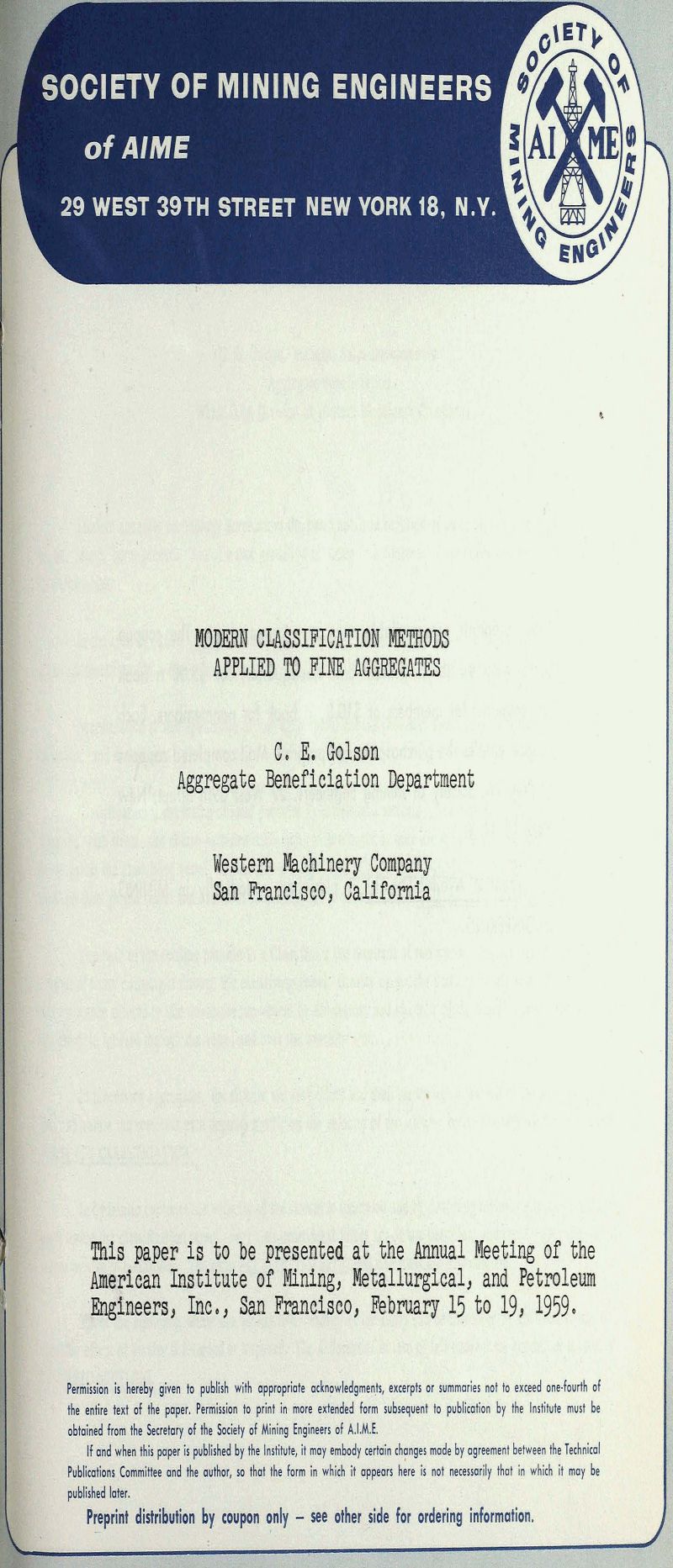Table of Contents
Modern concrete technology emphasizes the basic qualities required of an acceptable aggregate: it must be clean, sound, homogeneous, and of a size gradation resulting in a concrete of the desired physical qualities at a minimum cost.
In the case of coarse aggregates, crushing, scrubbing, and screening will usually provide the required material, although beneficiation is often necessary in order to eliminate unsound or deleterious fractions.
Differences Between Classification of Ores and Aggregates
Both the fundamental theory of classification and the equipment used ate essentially the same for aggregates and for ores, but the nature of the materials to be treated, the products required, the conditions of the problem to be solved and the methods employed to solve it differ:
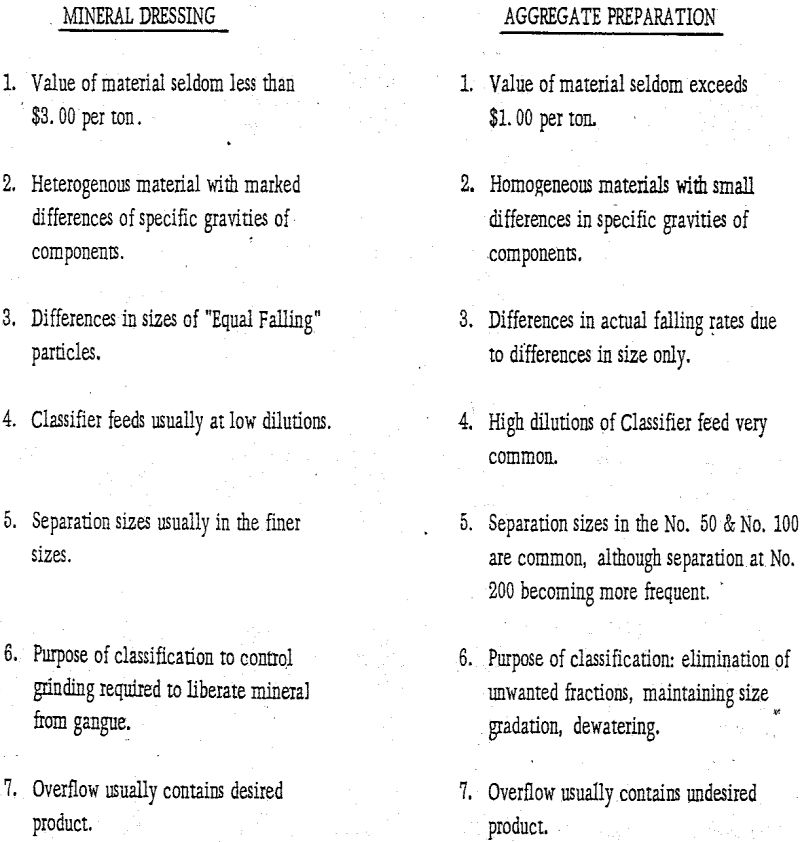
Statement of the Problem
A statement of the problem which classification is called upon to solve in. the aggregate industry will serve to establish the factors involved:
Classification should deliver a product of a given size consist, free of undesired fractions and containing a minimum of entrained water.
This in turn requires the following component operations:
- Removal of portions of size fractions in excess.
- Prevent loss of desired size fractions.
- Removal of unsound or deleterious materials.
- Removal of excess water.
Applications & Equipment
A. Velocity Classification Devices
- Recovery by settling only.
(a) Settling tanks
(b) Hydro-classifiers
(c) Combinations with other classifiers - Recovery by bottom unloading
(a) Classifying flume
(b) Scalping tank
(c) Cone Classifiers
(d) Cones – with hydraulic water - Recovery by conveying devices
(a) Drag-classifiers
(b) Screw-classifiers
(c) Rake-classifiers - Recovery by scooping out of a current.
B. Accelerated settling devices
C. Hindered settling devices
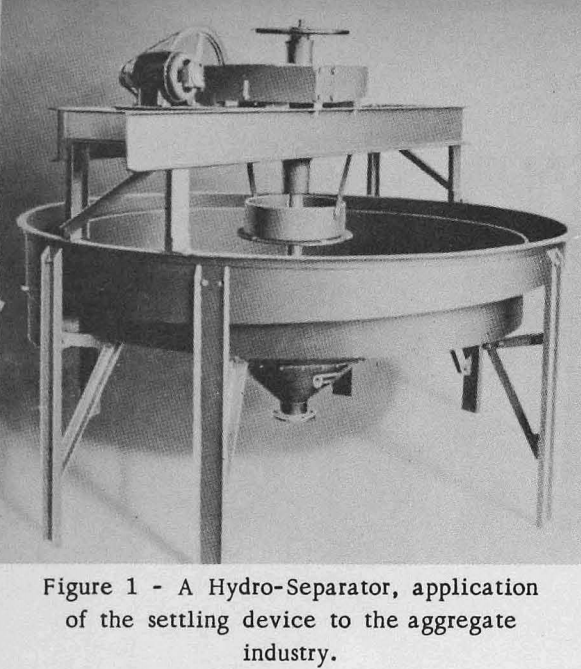
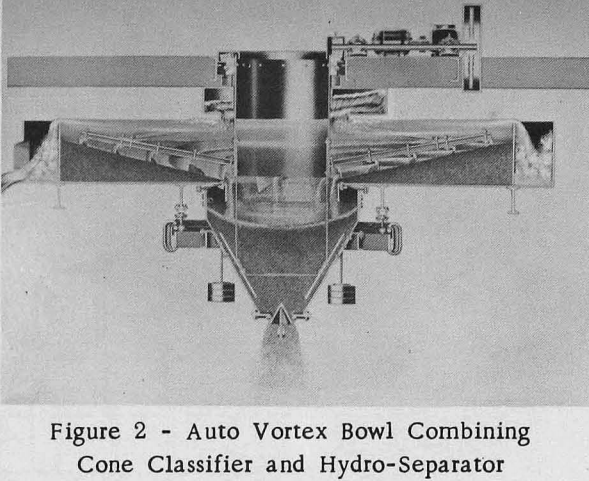
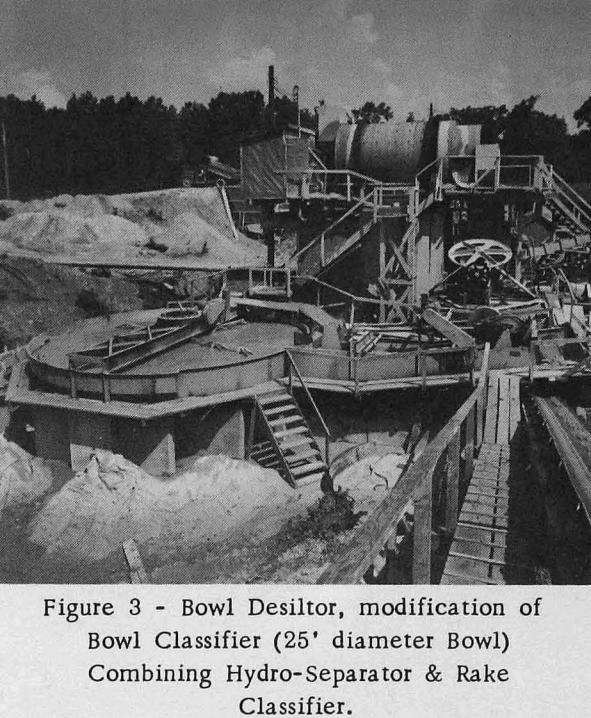
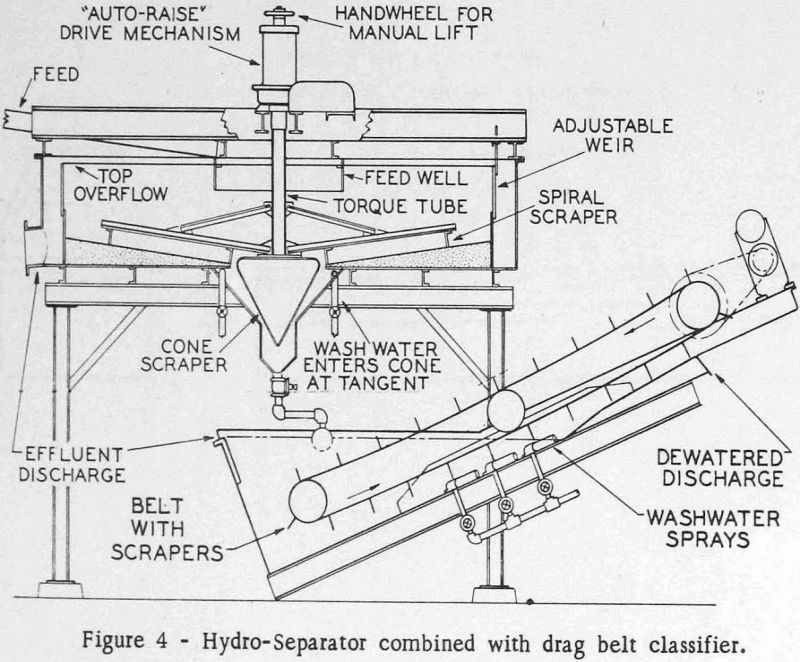
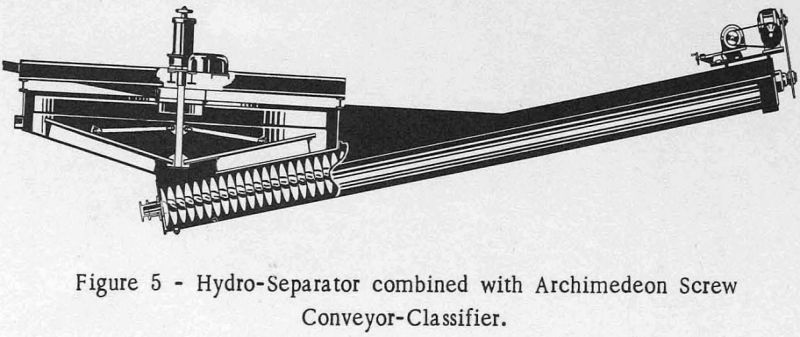
Velocity Classification – Recovery By Conveying Device
The problem of designing equipment to deliver a dryer sand than could be obtained from a bottom-unloading classifier, led to the scheme of separating the two phases of classification in order to obtain greater efficiency in each. Such a device calls for settling to be carried out in a tank designed to provide maximum quiescent area, maximum weir length to reduce overflow velocity, and sufficient depth so that sand could accumulate without disturbing the pool.
The Drag-Conveyor had been employed in the metallurgical industry, where it was known as the ESPERANZA CLASSIFIER. It consisted at first of a wooden tank and inclined drainage deck, the excavating and conveying was done by means of angle-iron flights mounted on an endless belt, the tight side being used to perform this service.
There are many variations from the basic design: in the shape of the settling tank, differing locations of the feed inlet and of the overflow weir, various slopes of the drainage deck. Characteristics and capacities of the machines will vary with these designs; but the principal features remain: ability to produce a sand containing virtually all of the material at the separation size or larger, and containing a small amount of entrapped moisture.
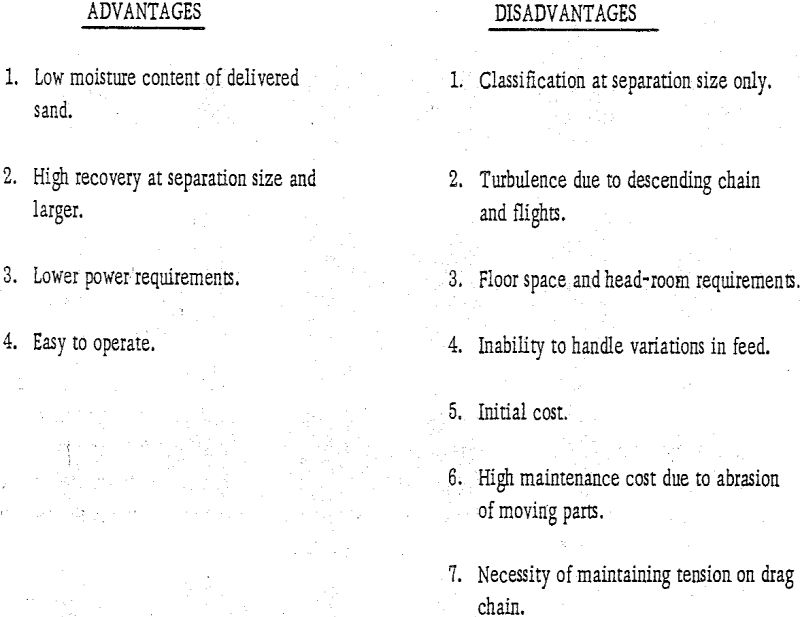
There are quite a few of these machines in use, some alone, mostly in series to handle varying specifications.
One of the most recent improvements, although its applicability to the aggregate industry is still to be determined is that of the Overdrain Classifier It combines several features in one machine: a modified hindered settling zone, where the feed is forced downward in a rising current of water; a standard velocity classification zone; and, thirdly, along the drainage deck, a series of hindered settling compartments with the slimes and undesired fines forced out through perforations in the belt and short-circuited directly to the pool. There are not enough applications of this machine in the aggregate industry to adequately evaluate it.
Use of the raking device as a means of recovery. This conveying device is different from conventional material conveying mechanisms. When the Thickener was introduced into metallurgical practice it was found that the sand delivered to a sand leaching plant still contained an appreciable amount of entrained slimes and water. In order to meet the requirements of a cyanide leach, these had to be eliminated. This led to the first of a long series of Rake Classifiers.
Velocity Classification – Recovery by Scooping Out of a Current
These machines are used more for the dewatering of sands than for their classification. Their design varies, but no provision is made for a settling pool; in all cases it is by a change in the direction of the flow of the slurry, or by impingement on the excavating device that the separation between solid and liquid is made. The classification is therefore extremely rudimentary and only in rare cases, are these devices used to meet modern specifications. Their effectiveness as a scrubber is somewhat higher, because of the violent changes in direction.
Many improvements have been made over the basic design of the cyclone since its first use in the field of aggregate classification. The principal reason for these improvements has been the requirement of high velocities in order to obtain the cyclonic effect. This in turn required high inlet pressures, which, since only pumping will deliver the slurry at the required pressures, means a high horsepower requirement for the pump, and, even more costly because of the fact that the slurry contains abrasive materials, a high rate of wear on those pump parts in contact with the slurry.
A great improvement is claimed in the replacement of the tangential feed entry by the involute feed entry, since pre-orientation of the slurry into its circular path, even before it enters the cylinder, would result in a reduction of pressure requirements at the feed entry. It has a further advantage in that the area of the feed entry is much larger and the relation of orifices can be maintained with smaller diameter cylinders.
Modifications of the discharge orifices to add a suction effect are claimed by some manufacturers to add to the efficiency of the cyclone. However, it would appear that introducing this extraneous element may change the characteristics of the separation phase by disrupting the force pattern, and that added recovery of the product may be effected at the expense of the sharpness of separation.
